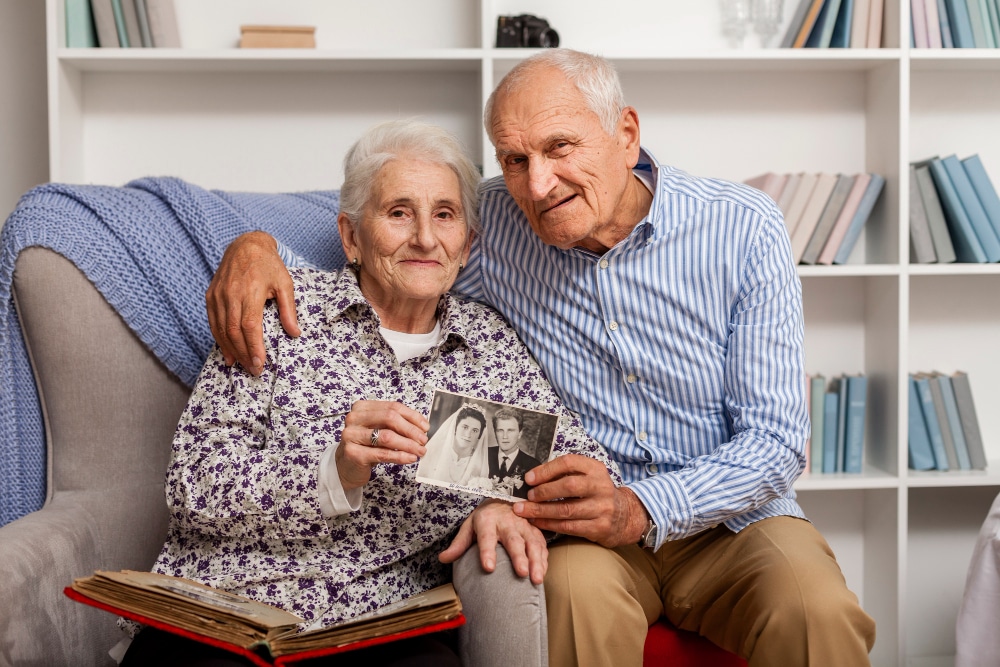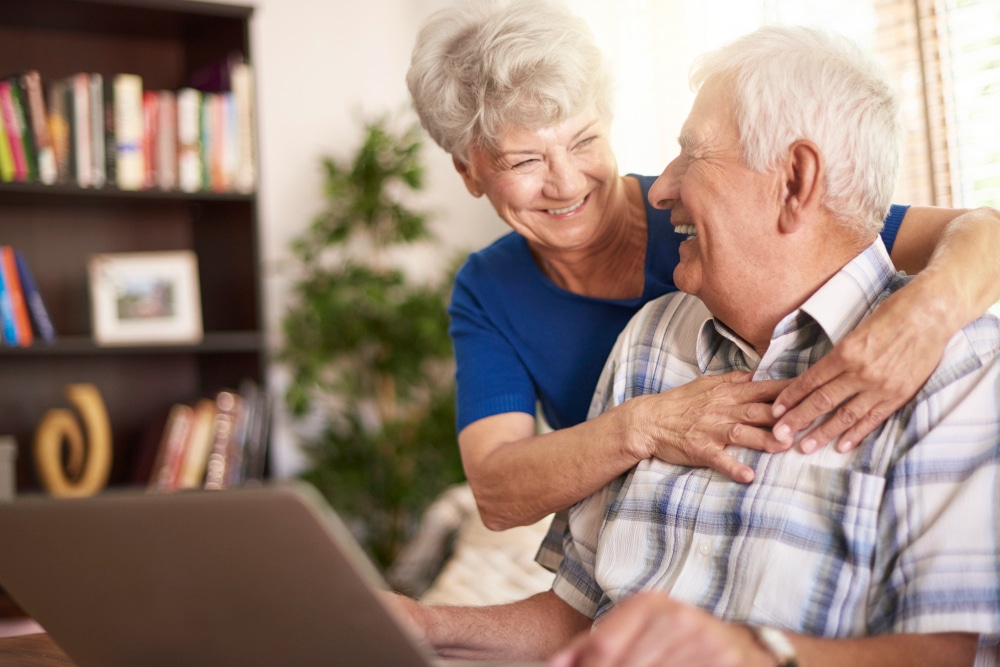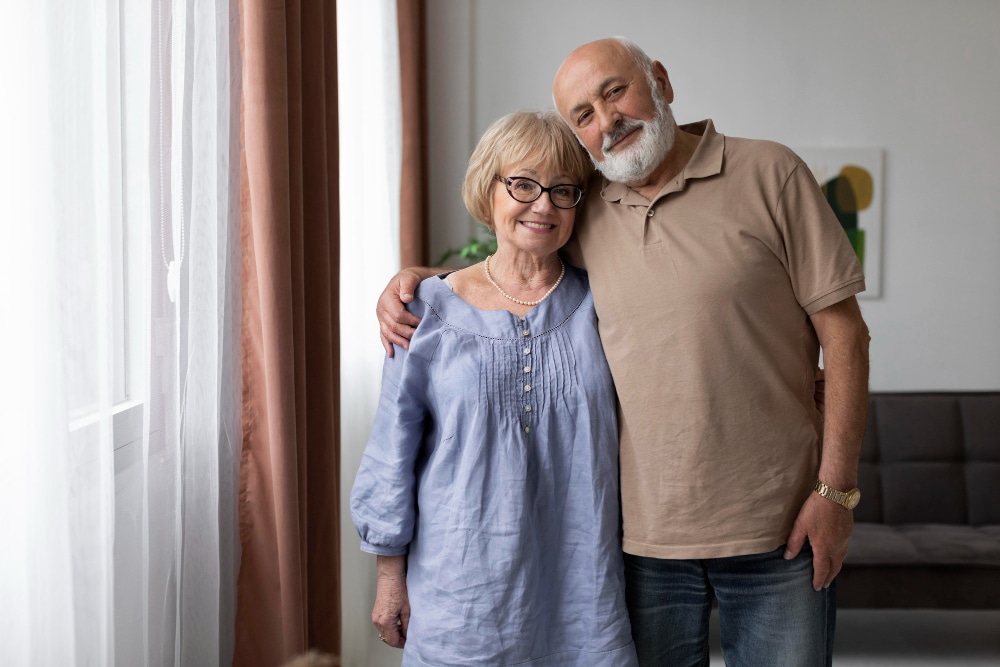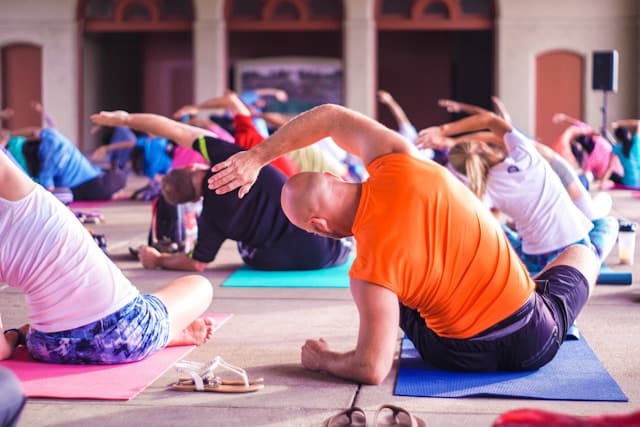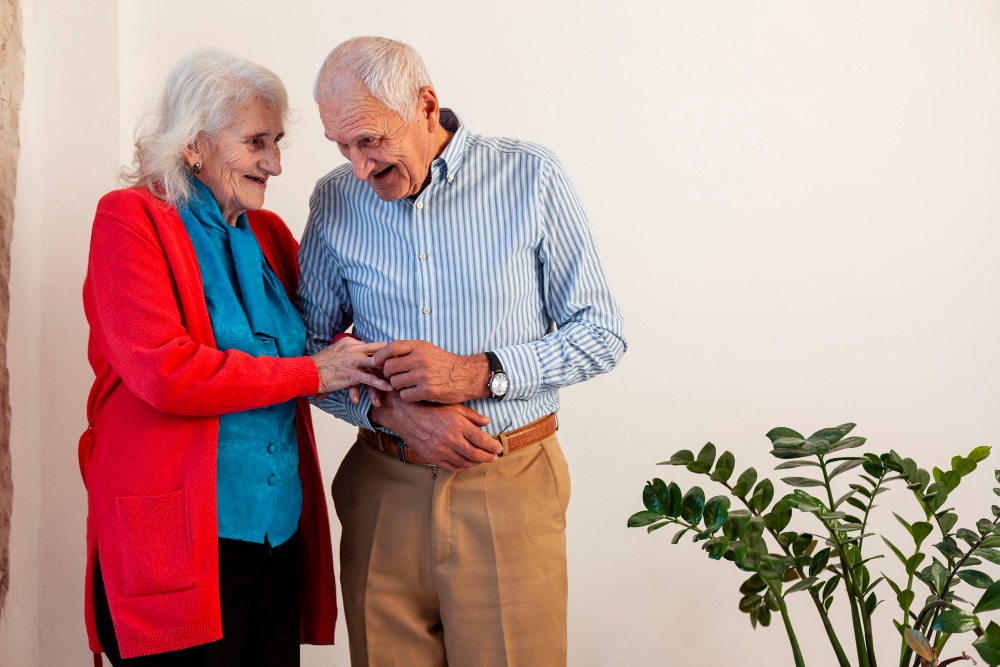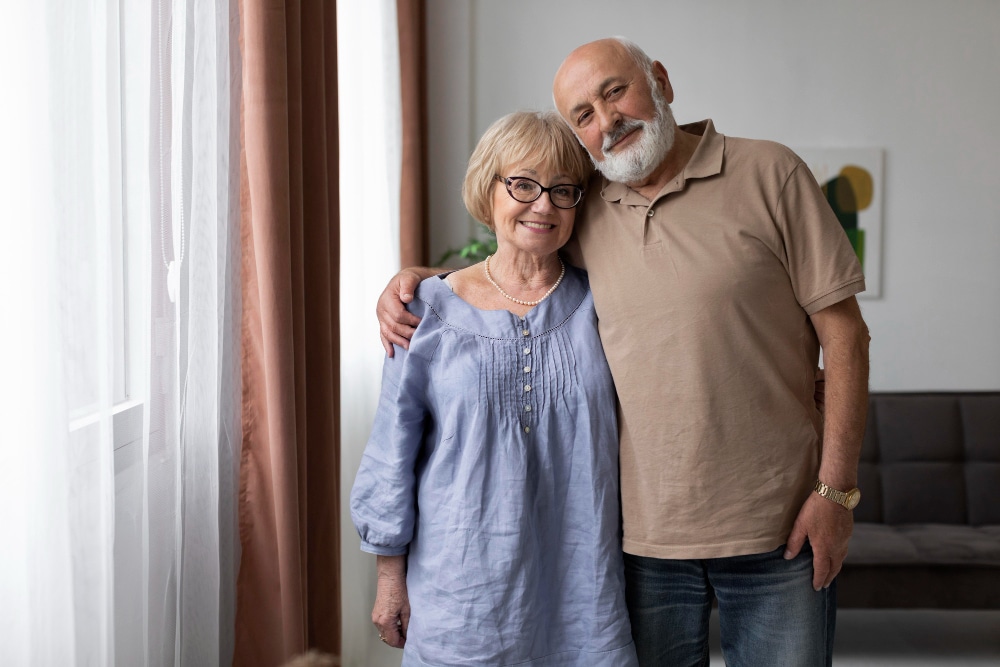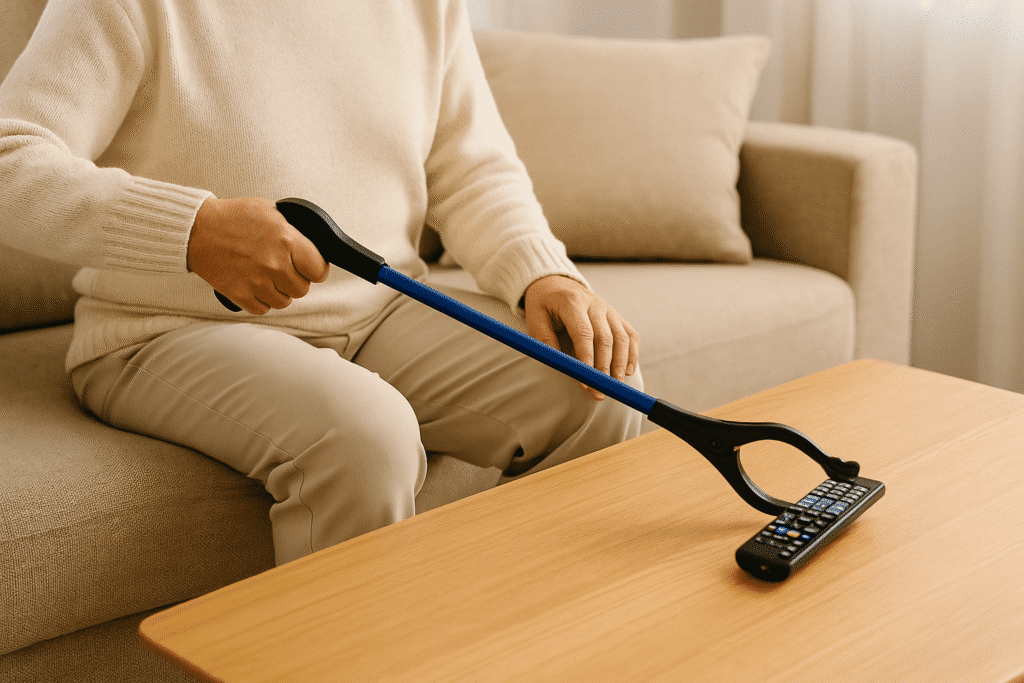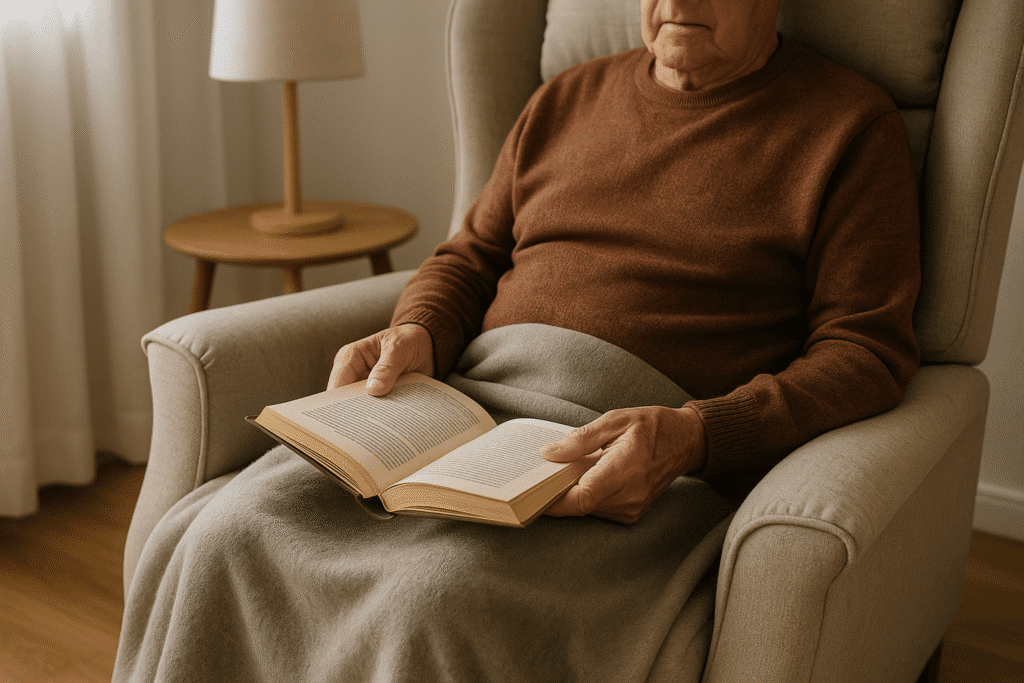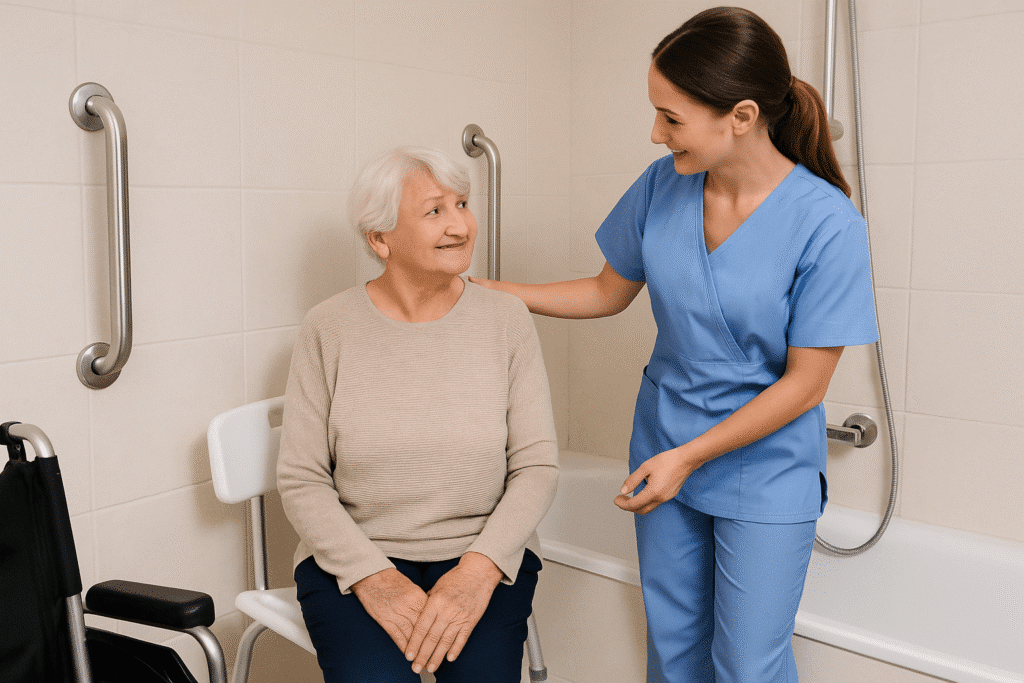Getting up off the floor with bad knees can be challenging, especially if you live alone or have joint pain that limits movement.
This guide walks you through safe, practical ways to rise after a fall using real techniques that seniors and caregivers can trust. No rushing, no strain, just steady, confident steps.
Key Summary:
To get up off the floor with bad knees, move slowly toward a sturdy surface like a chair or couch, roll onto your side, and bring your stronger leg forward with your foot flat on the floor. Use your hands and arms to push up gently, keeping weight off your knees. If needed, use support aids such as a walker, grab bar, or lift cushion to rise safely without strain.
Why Getting Up Can Be So Hard with Bad Knees
Getting up off the floor with bad knees is difficult because knee joints lose strength, flexibility, and stability with age. Arthritis, muscle weakness, or past injuries can make it painful to bend or push up from the ground.
For many older adults, even small movements like kneeling or shifting weight can cause discomfort or imbalance.
As we age, muscles naturally weaken and joint cartilage wears down. This reduces both strength and confidence when trying to stand up, especially after sitting or falling.
According to the CDC, nearly 40% of adults over 65 have some form of mobility limitation, and more than 1 in 4 seniors experience a fall each year.
Common reasons it is harder to get up include:
- Arthritis or knee stiffness that limits range of motion
- Weaker leg and core muscles from reduced activity
- Balance issues or fear of falling again
- Lack of stable surfaces nearby for support
If your knees hurt or feel unstable, do not rush. Learning the right techniques and practicing them safely can make all the difference in getting up without injury.
Read more: Is a recumbent bike good exercise for seniors with bad knees?
Before You Move: Stay Calm and Assess
If you have fallen or found yourself on the floor, the first thing to do is stay calm. Taking a few seconds to breathe and think clearly will help prevent further strain or panic.
Here is what to do before you try to move:
- Take slow, steady breaths to relax your body
- Check for pain or injury in your knees, hips, or wrists
- Look around for support, such as a sturdy chair or low table
- If you feel dizzy or unsafe, call for help using a phone, medical alert button, or voice assistant
- Avoid twisting or pushing suddenly, which can worsen joint pain
Taking these steps first helps you regain control, reduce the risk of re-injury, and plan the safest way to get up off the floor.
How to Get Up Off the Floor with Bad Knees
The safest way to get up off the floor with bad knees is to move slowly toward a sturdy surface, use your stronger leg for support, and push up with your hands instead of your knees. You can use a solid chair, a low bed, or a helper for assistance, and many seniors also benefit from mobility aids like lift cushions or walkers.
The key is to take your time and use what is around you for support rather than forcing your knees to bear all your weight.
Here are four safe, step-by-step ways that work well for most people.
1. Using a Sturdy Chair
If you can reach a sturdy chair, this is often the easiest and safest way to get up. Choose one that will not slide or tip over.
Step-by-step:
- Roll onto your side, then move onto your hands and knees.
- Crawl or scoot toward the chair and place your hands on the seat.
- Bring your stronger leg forward so your foot is flat on the floor.
- Push through your hands and front leg to lift yourself slowly until standing.
Helpful tips:
- Keep your weight evenly balanced.
- Take breaks if you feel lightheaded.
- Avoid using a chair with wheels or one that is too soft.
2. Using a Couch or Low Bed
If a sturdy chair is not nearby, a couch or low bed can also help you regain balance and support.
Try this:
- Roll onto your side and move to a kneeling or seated position.
- Place both hands on the edge of the couch or bed.
- Bend your stronger leg and slowly shift your weight forward.
- Use your arms and legs together to lift your body and slide up onto the surface.
Extra support ideas:
- Use cushions or pillows behind your back for comfort.
- Keep a non-slip mat beside the bed or couch to prevent sliding.
3. With a Helper or Caregiver
If someone is nearby, let them assist you safely without pulling or lifting too much. The goal is steady guidance, not force.
How a helper can assist:
- Have the helper stand close, slightly to one side of you.
- They can place one hand on your upper back or shoulder for light support.
- You can hold onto their forearm or a gait belt if available.
- Work together to slowly rise using a stable surface like a chair or sofa for balance.
Important reminders:
- Avoid being pulled up under the arms. This can strain shoulders or cause a fall.
- Communicate each move clearly before acting.
4. With Assistive Devices
Mobility aids and lift devices are designed specifically to make standing easier for people with knee or balance problems.
Useful tools include:
- Floor-to-chair lifts that raise you gently from the ground.
- Inflatable lifting cushions operated by a small air pump.
- Use walkers or canes for balance once upright.
- Lift chairs that recline and rise to help you sit or stand safely.
If you live alone or fall often, keeping one of these devices nearby can make a big difference. They reduce pressure on your knees and help you recover safely without needing another person’s help.
Read more: Best recliners for seniors
What to Do If You Can’t Get Up
If you can’t get up off the floor with bad knees, stay calm, call for help, and make yourself as comfortable and visible as possible until assistance arrives. Use a medical alert button, phone, or voice assistant to contact a neighbor, family member, or emergency services.
If you are alone, roll onto your side to ease pressure on your joints and cover yourself with a blanket or nearby clothing to stay warm.
Try to move toward a wall or furniture for support if possible. Keep your legs slightly bent to reduce strain and breathe slowly to stay relaxed.
Once help arrives, mention any pain, dizziness, or swelling, as these could signal an injury that needs medical attention.
Tips to Make It Easier Next Time
A few simple habits and home adjustments can make it much easier to get up safely in the future.
- Strengthen your legs and core. Do gentle chair squats, wall push-ups, or seated leg lifts a few times a week.
- Stretch daily. Keep your knees flexible with light morning stretches or water-based exercises.
- Keep walking aids nearby. Place a cane, walker, or reacher stick within easy reach in rooms where you spend most of your time.
- Clear your floors. Remove rugs, cords, or clutter that can cause slips or make moving harder.
- Improve lighting. Use motion-sensor night lights in hallways and bathrooms to reduce nighttime falls.
- Consider a fall alert system. These wearable devices can connect you to help with the press of a button.
Read more: Low-impact exercises for seniors
Best Tools and Aids That Can Help
The right tools can take the strain off your knees and help you stay independent.
- Lift chairs that rise to help you sit and stand with little effort
- Inflatable floor cushions that gently raise you after a fall
- Grab bars and floor assist handles for extra leverage when getting up
- Walker or rollator for stability when standing or walking
- Leg braces or knee supports to reduce pain and protect weak joints
- Reacher or grabber tools to pick up items without bending
Each of these aids is designed to make movement safer and reduce the stress on aging knees.
Final Words
Getting up off the floor with bad knees takes patience, planning, and the right technique. Remember to move slowly, use nearby support, and never force your knees to bear your full weight.
Regular exercise, better home safety, and simple tools like grab bars or lift cushions can make everyday movements easier and safer.
With a little preparation, you can stay confident, independent, and ready to handle small challenges without fear of falling or injury.
FAQs
How can I strengthen my knees to make getting up easier?
You can strengthen your knees with gentle, low-impact exercises like seated leg lifts, wall sits, and water aerobics. These build leg and core muscles without putting pressure on your joints. Regular stretching and short daily walks also help improve balance and flexibility.
What’s the safest way for an elderly person to get off the floor alone?
The safest method is to roll onto your side, move onto hands and knees, and use a sturdy chair or piece of furniture for support while pushing up with your stronger leg. Move slowly and pause if you feel pain or dizziness. Avoid quick or twisting motions that could strain your knees.
Are there devices that lift you up from the floor?
Yes, there are specialized devices like electric lift cushions, floor-to-chair lifts, and portable air-powered seats that raise you safely after a fall. These are especially useful for people with bad knees or limited upper body strength. They allow you to get up without needing another person’s help.
Should I see a doctor after every fall?
It’s wise to contact your doctor after any fall, even if you feel fine. Some injuries, like fractures or internal bruising, may not be immediately obvious. Your doctor can check for hidden injuries and help prevent future falls through balance or mobility assessments.
Mark has over 10 years of hands-on experience in senior care. He founded ElderSavvy to provide honest, easy-to-follow advice on tools that support comfort, safety, and independence. Mark oversees all content and product reviews, guided by insights from caregivers, health professionals, and real-life use.

